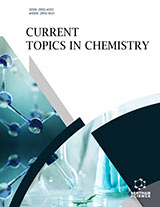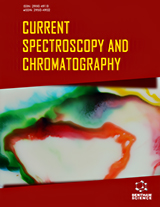Abstract
Background: Analysis of drug concentrations in biological fluids is required in clinical sciences for various purposes. Among other biological samples, exhaled breath condensate (EBC) is a potential sample for follow up of drug concentrations.
Methods: A dispersive liquid-liquid microextraction (DLLME) procedure followed by a validated liquid chromatography method was employed for the determination of budesonide (BDS) in EBC samples collected using a homemade setup. EBC is a non-invasive biological sample with possible applications for monitoring drug concentrations. The proposed analytical method is validated according to the FDA guidelines using EBC-spiked samples. Its applicability is tested on EBC samples collected from healthy volunteers receiving a single puff of BDS.
Results: The best DLLME conditions involved the use of methanol (1 mL) as a disperser solvent, chloroform (200 μL) as an extraction solvent, and centrifugation rate of 3500 rpm for 5 minutes. The method was validated over a concentration range of 21-210 μg·L-1 in EBC. Inter- and intra-day precisions were less than 10% where the acceptable levels are less than 20%. The validated method was successfully applied for the determination of BDS in EBC samples.
Conclusion: The findings of this study indicate that the developed method can be used for the extraction and quantification of BDS in EBC samples using a low cost method.
Keywords: Bioanalysis, budesonide, determination, exhaled breath condensate, HPLC-UV, microextraction.
Graphical Abstract
[http://dx.doi.org/10.1016/j.anai.2015.09.007] [PMID: 26460293]
[http://dx.doi.org/10.1111/apt.12712] [PMID: 24641622]
[http://dx.doi.org/10.1046/j.1365-2125.1996.00493.x] [PMID: 8971424]
[http://dx.doi.org/10.1097/MEG.0000000000001456] [PMID: 31211724]
[http://dx.doi.org/10.2165/00003495-199244030-00007] [PMID: 1382936]
[http://dx.doi.org/10.1016/j.aca.2014.03.014] [PMID: 24759744]
[http://dx.doi.org/10.11613/BM.2013.034] [PMID: 24266297]
[http://dx.doi.org/10.1088/1752-7155/8/3/034001] [PMID: 24946087]
[http://dx.doi.org/10.4155/bio-2017-0205] [PMID: 29236512]
[http://dx.doi.org/10.1088/1752-7163/2/3/030302]
[http://dx.doi.org/10.1007/s00216-018-1259-4] [PMID: 30046867]
[http://dx.doi.org/10.1016/j.jaerosci.2010.02.010]
[PMID: 24272872]
[http://dx.doi.org/10.1093/chromsci/bmx067] [PMID: 28977479]
[PMID: 1457467]
[http://dx.doi.org/10.1016/j.jpba.2013.12.006] [PMID: 24389462]
[http://dx.doi.org/10.1016/j.jchromb.2014.08.035] [PMID: 25228411]
[http://dx.doi.org/10.1016/j.jchromb.2011.10.029] [PMID: 22169057]
[http://dx.doi.org/10.1016/0378-4347(94)00473-I] [PMID: 7780604]
[http://dx.doi.org/10.1016/j.jpba.2006.05.016] [PMID: 16842962]
[http://dx.doi.org/10.1007/s40199-019-00250-x] [PMID: 30847847]
[http://dx.doi.org/10.18433/J3WK65] [PMID: 26158286]
[http://dx.doi.org/10.1039/C7AY00110J]
[http://dx.doi.org/10.1007/s00604-017-2325-x]
[http://dx.doi.org/10.1039/C7AY01715D]
[http://dx.doi.org/10.15171/PS.2017.39]
[http://dx.doi.org/10.15171/PS.2019.8]
[http://dx.doi.org/10.1007/s00604-019-3278-z] [PMID: 30778721]
[http://dx.doi.org/10.1039/C8AY02279H]
[http://dx.doi.org/10.15171/PS.2019.13]





























